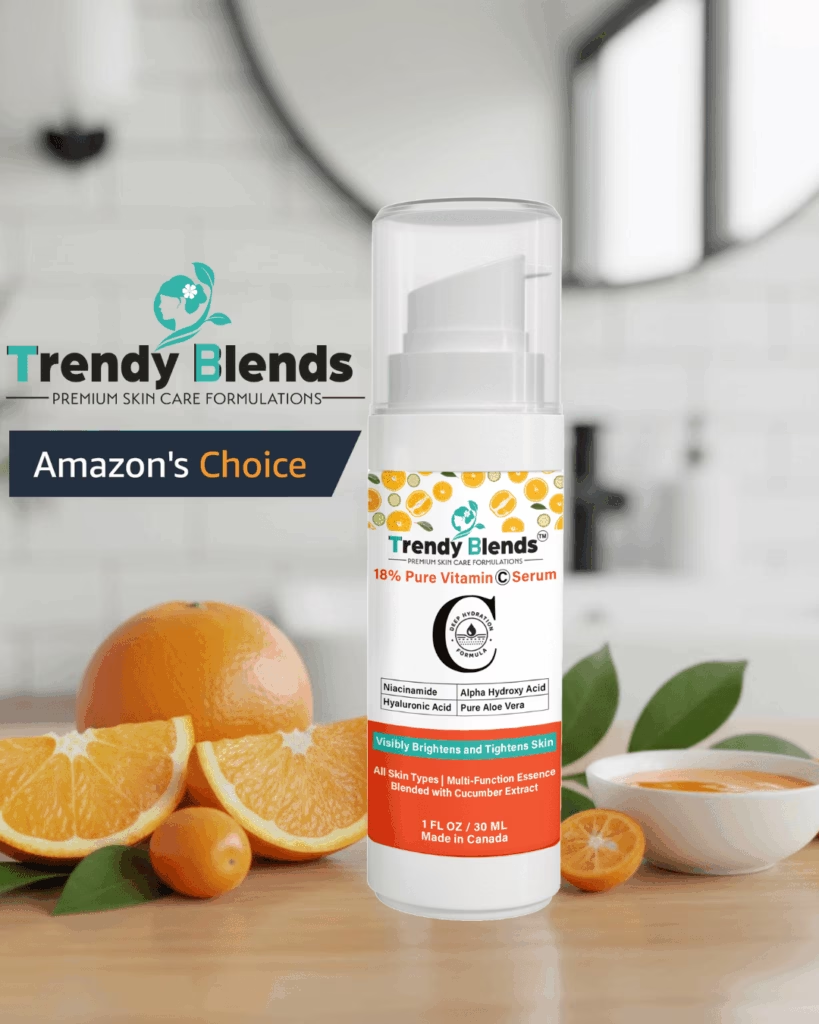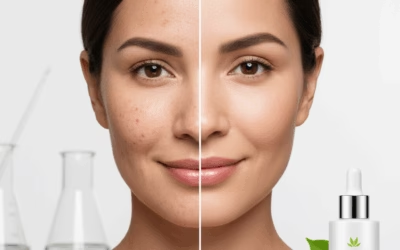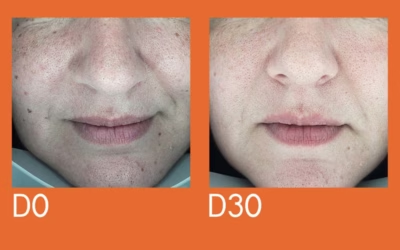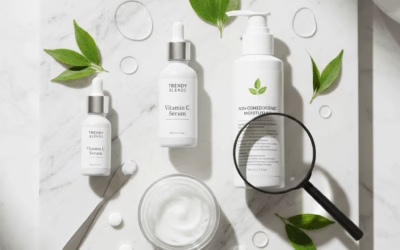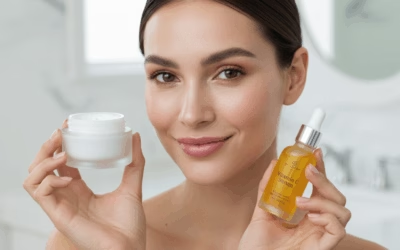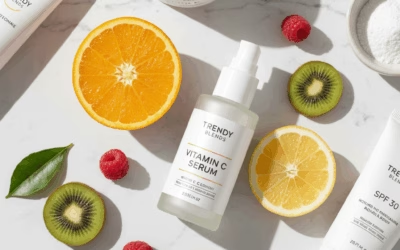7 Breakthroughs: Best Treatment for Deep-Set Wrinkles on the Face.

Table of Contents
Discover the 7 breakthroughs and latest clinically proven procedures for the best treatments.
When seeking to restore a smoother, more youthful complexion, few cosmetic challenges are as significant or as complex as treating deep-set wrinkles on the face. These lines, unlike transient fine lines, represent structural changes in the skin and underlying tissue that require sophisticated, multi-faceted approaches. Finding the best treatment for deep-set wrinkles on the face is not a simple choice, but a carefully customized strategy that often combines several cutting-edge procedures.
This definitive guide will navigate the landscape of modern dermatological and surgical interventions, providing you with a detailed, 2,000-word roadmap from the foundational science of wrinkle formation to the most advanced combination therapies available in 2024. Our goal is to outline the most effective options for finding the best treatment for deep-set wrinkles on the face.
Understanding Deep-Set Wrinkles: Causes, Types, and Severity
To effectively treat a deep-set wrinkle, we must first understand its nature. Deep-set wrinkles are not superficial; they are grooves and folds formed over years, reflecting a loss of core structural components in the skin. This structural collapse dictates the necessity for treatments that go beyond the superficial, making the search for the best treatment for deep-set wrinkles on the face critical.
The Core Causes of Deep-Set Wrinkle Formation
The formation of deep-set wrinkles is a convergence of intrinsic (genetic) and extrinsic (environmental) factors:
- Intrinsic Aging (The Biological Clock): As we age, the body’s production of vital structural proteins declines dramatically.
- Collagen Loss: After the age of 20, collagen production decreases by approximately 1% per year. Collagen is the scaffolding of the dermis. Its degradation leads to thinning skin and a loss of structural integrity, allowing lines to deepen.
- Elastin Breakdown: Elastin gives the skin its ability to “snap back.” When elastin fibers become fragmented or disorganized—a condition known as solar elastosis—the skin loses its resilience and creases become permanent.
- Volume Loss (Fat and Bone): The subcutaneous fat pads that keep the face plump thin out and shift, causing the skin to sag and fold. This volume depletion is a primary cause of deep folds like nasolabial folds and marionette lines.
- Extrinsic Aging (Environmental Damage): The single most significant environmental contributor is Ultraviolet (UV) Radiation.
- Photoaging: Chronic sun exposure generates free radicals that destroy collagen and elastin fibers at an accelerated rate. This damage is cumulative and responsible for the coarse, leathery texture often seen with deep facial creases.
- Smoking and Pollution: These lifestyle factors create oxidative stress, hindering the skin’s ability to repair itself and further accelerating the breakdown of collagen.
- Repetitive Muscle Movement: The underlying facial muscles are constantly contracting. In younger skin, the dynamic lines created by smiling or frowning disappear when the face rests. Over time, as collagen is depleted, these dynamic lines etch themselves permanently into the skin, becoming static deep-set wrinkles.
Static vs. Dynamic: The Crucial Distinction
Identifying the type of wrinkle is the first step in determining the best treatment for deep-set wrinkles on the face:
- Dynamic Wrinkles: Visible only when the face is in motion (e.g., squinting, frowning). Treatment focus: Muscle relaxation (Neuromodulators).
- Static Wrinkles (Deep-Set Wrinkles): Visible when the face is completely at rest. These are the wrinkles that this article primarily addresses. They result from years of dynamic movement coupled with structural collapse and volume loss. Treatment focus: Volume restoration, collagen regeneration, and skin resurfacing.
Common deep-set (static) wrinkles include: Nasolabial Folds, Marionette Lines, and Deep Forehead Lines.
The Foundational Treatments: Maximize Topical Efficacy
Before committing to advanced procedures, a robust, clinically proven topical routine is mandatory. These products support professional treatments and are often the best treatment for deep-set wrinkles on the face in the earliest stages.
1. Prescription-Strength Retinoids: The Gold Standard
Retinoids are Vitamin A derivatives and are the most proven topical agents for counteracting photoaging and stimulating collagen production. They are a necessary component of the strategy for finding the best treatment for deep-set wrinkles on the face.
- Tretinoin (Retin-A, Renova): A powerful prescription retinoid that works by normalizing cell turnover and significantly boosting collagen synthesis in the dermis.
- Mechanism: Tretinoin actively signals skin cells to regenerate, thickening the dermis over time and improving the appearance of deep lines.
- Results Timeline: Significant improvement in deep wrinkles takes a minimum of 6 to 12 months of consistent use.
- Note: Products like Adapalene (Differin) are now available over the counter and offer a gentler but still effective alternative for those sensitive to prescription Tretinoin.
2. Supportive Topicals and Antioxidants
While retinoids handle regeneration, other ingredients protect and support the skin’s structure:
- Vitamin C (L-Ascorbic Acid): A potent antioxidant that neutralizes free radicals caused by pollution and UV light. Crucially, Vitamin C is a necessary cofactor for collagen synthesis, meaning it helps the skin physically create new collagen.
- Peptides: Short chains of amino acids that signal the skin to perform specific functions, such as producing more collagen or hyaluronic acid. Copper peptides and signal peptides are often included in serums to enhance firmness and elasticity.
- Niacinamide (Vitamin B3): Helps improve the skin barrier function, reduce redness, and can slightly improve the texture and elasticity of skin, supporting overall skin health while using powerful actives like retinoids.
3. The Crucial Role of SPF: Prevention as Treatment
No conversation about deep wrinkles is complete without emphasizing broad-spectrum sunscreen (SPF 30+) applied daily, 365 days a year. Since UV damage is the primary engine of structural aging, diligent sun protection halts the degradation of existing collagen and elastin, preventing mild wrinkles from becoming severe and deep-set. It is the cheapest and arguably the most vital component of any treatment plan for finding the best treatment for deep-set wrinkles on the face.
Minimally Invasive Deep Wrinkle Treatments: The Injectable Revolution
For lines and folds that topical products can no longer fully address, injectables offer a powerful, non-surgical intervention. The best treatment for deep-set wrinkles on the face often begins here, using a combination of neuromodulators and dermal fillers.
1. Neuromodulators (Botox, Dysport, Daxxify, Xeomin)
While primarily known for treating dynamic wrinkles, neuromodulators are essential in treating deep-set static wrinkles because they stop the constant muscle movement that reinforces the crease.
- Mechanism: They temporarily block nerve signals to the targeted muscles, preventing contraction. By relaxing the muscle underneath the wrinkle (like the frown muscles or crow’s feet), the skin has a chance to rest and the lines soften over time.
- Key Products:
- Botox/Dysport/Xeomin: Provide results lasting 3-4 months.
- Daxxify (New in 2024): Offers a key advantage with results that can last up to 6 months or longer in some patients, offering a potentially more sustainable solution for the best treatment for deep-set wrinkles on the face that originate from muscular action.
- Ideal Areas: Glabellar lines (11s), forehead lines, and deep crow’s feet.
2. Dermal Fillers: Restoring Lost Volume
Dermal fillers are perhaps the most direct intervention for deep, static facial folds, as they address the underlying cause: volume loss. This makes them a critical part of determining the best treatment for deep-set wrinkles on the face.
- Mechanism: Injectable materials are placed beneath the skin to fill the depression, lift the tissue, and restore the smooth contour of the face.
- Hyaluronic Acid (HA) Fillers (Juvederm, Restylane): HA is a naturally occurring substance in the skin that attracts and holds water, providing immediate plumping.
- Application: HA fillers are superb for deep nasolabial folds, marionette lines, and building foundational structure in the cheeks to lift mid-face sagging, which indirectly improves lower face creases.
- Duration: Results typically last 6 to 18 months, depending on the product and injection site. A combination of HA fillers is often considered the best treatment for deep-set wrinkles on the face around the mouth.
- Biostimulatory Fillers (Sculptra, Radiesse): These fillers work differently, focusing on long-term collagen production.
- Poly-L-Lactic Acid (Sculptra): Stimulates the body to produce its own collagen over several months. While results are slower, the effect is longer-lasting and more natural-looking. It’s excellent for widespread volume loss.
- Calcium Hydroxylapatite (Radiesse): Provides immediate volume but also works over time to stimulate collagen. It is often used for deeper folds and jawline contouring.
Advanced Energy-Based and Resurfacing Treatments
While injectables restore volume, energy-based treatments and resurfacing procedures focus on improving the quality of the skin itself by regenerating collagen and elastin from the inside out. They are essential components in the multi-modal approach to finding the best treatment for deep-set wrinkles on the face.
3. Laser Skin Resurfacing: The Power of Targeted Damage
Laser resurfacing uses intense light energy to strategically remove damaged layers of skin and stimulate a powerful healing response that generates massive amounts of new collagen.
- Ablative Lasers (CO2, Er:YAG): These are the most aggressive and effective options for the deepest wrinkles. They vaporize the outermost layer of skin (the epidermis) and heat the underlying dermis.
- Results: Offer the most dramatic improvement in texture, deep wrinkles, and sun damage. They are often considered the best treatment for deep-set wrinkles on the face in a single session.
- Downtime: Significant (1-3 weeks) due to redness, peeling, and scabbing.
- Fractional Technology: Modern fractional CO2 lasers treat only tiny “columns” of skin, leaving surrounding tissue intact. This significantly reduces downtime and side effects while maintaining strong results for the best treatment for deep-set wrinkles on the face.
- Non-Ablative Lasers (Fraxel Restore): These heat the underlying tissue without removing the surface skin.
- Results: Offer moderate improvement in fine lines and tone. Less effective for the deepest creases but require little to no downtime. They are a gentler option in the pursuit of the best treatment for deep-set wrinkles on the face.
4. Radiofrequency (RF) Microneedling: A Synergistic Approach
RF Microneedling combines traditional collagen-stimulating microneedling with targeted radiofrequency energy delivered deep into the dermis. This is a top-tier contender for the best treatment for deep-set wrinkles on the face that require tightening and texture refinement.
- Key Devices (Morpheus8, Profound RF): Tiny needles create micro-channels, while RF energy is simultaneously emitted from the needle tips.
- Mechanism: The RF heat creates controlled thermal injury deep in the dermis. This controlled damage triggers an intense wound-healing response, leading to the massive synthesis of new collagen, elastin, and hyaluronic acid.
- Profound RF: This device, in particular, is clinically proven to deliver energy at precise temperatures for a specific duration, stimulating all three key structural components and providing results comparable to a mini-lift for skin laxity and deep folds. This often yields the best treatment for deep-set wrinkles on the face for individuals who are not ready for surgery.
- Downtime: Typically 3-5 days of redness and swelling.
5. Deep Chemical Peels: A Time-Tested Solution
Chemical peels use an acidic solution to exfoliate and destroy targeted layers of the skin, promoting regeneration. For deep wrinkles, only medium to deep peels (like Phenol or TCA) are effective.
- Mechanism: These deeper peels penetrate the dermis, where the structural damage lies. They effectively remove the superficial layers of photo-damaged skin, smoothing texture and significantly diminishing the depth of creases.
- Results: Can produce profound results similar to ablative lasers, making them a contender for the best treatment for deep-set wrinkles on the face in certain areas, particularly around the mouth (perioral wrinkles).
- Downtime: Moderate to significant, requiring careful post-peel care. They carry a higher risk of pigmentation issues for darker skin tones and must be performed by an experienced professional.
The Surgical Frontier: When Other Treatments Aren’t Enough
For individuals with extreme skin laxity, significant jowling, and the deepest facial folds, even the most aggressive non-surgical options may fall short. In these cases, surgery becomes the most durable and definitive answer for the best treatment for deep-set wrinkles on the face.
6. Rhytidectomy (Facelift) and Neck Lift
A facelift is a surgical procedure designed to correct sagging facial skin and underlying tissue that creates pronounced jowls and deep marionette lines.
- Mechanism: The surgeon repositions the underlying muscle and connective tissue (SMAS layer), excises excess skin, and re-drapes the remaining skin tautly.
- Results: A facelift provides the most comprehensive and long-lasting improvement for severe deep-set wrinkles caused by gravity and severe volume shifting.
- Note: Surgery often needs to be complemented by resurfacing procedures (like a fractional CO2 laser) to improve the surface texture and fine lines that the lift itself cannot correct. This integrated approach represents the highest tier of the best treatment for deep-set wrinkles on the face.
Strategy: The Ultimate Best Treatment for Deep-Set Wrinkles on the Face
No single treatment is universally the best treatment for deep-set wrinkles on the face. The most effective and personalized plan is almost always a combination of therapies executed over time. A certified dermatologist or plastic surgeon must assess the specific cause of your wrinkles to recommend the ideal regimen.
The Combination Therapy Strategy (The Ultimate Solution)
| Wrinkle Cause | Treatment Goal | Recommended Combination for Best Results |
|---|---|---|
| Muscle Action (Dynamic/Static Frown) | Muscle Relaxation | Neuromodulators (Botox/Daxxify) + Tretinoin |
| Volume Loss (Folds, Marionette Lines) | Structural Support & Filling | Hyaluronic Acid Fillers + Biostimulatory Fillers (Sculptra) |
| Skin Quality (Coarse Texture, Deep Lines) | Resurfacing & Tightening | RF Microneedling (Morpheus8/Profound) + Ablative Laser Resurfacing |
| Severe Laxity (Jowls, Neck) | Lifting & Repositioning | Facelift + Laser Resurfacing (or Deep Peel) |
This synergistic approach ensures that you are treating the wrinkle on three fronts: relaxing the muscle (neuromodulators), replacing the lost volume (fillers), and improving the skin quality (resurfacing/RF). For many patients, the combination of dermal fillers and energy-based procedures is proven to be the best treatment for deep-set wrinkles on the face without the risk and recovery of surgery.
For instance, one could utilize Sculptra to rebuild overall cheek volume (lifting nasolabial folds), use a deep HA filler to fill any remaining crease, and then follow up with RF microneedling to tighten the superficial skin and stimulate collagen.
The Role of Long-Term Maintenance
Regardless of the procedure chosen, maintenance is non-negotiable. Even the best treatment for deep-set wrinkles on the face requires commitment.
- Strict Sun Protection: Mandatory daily application of broad-spectrum SPF to prevent new UV damage and preserve treatment results (Source: American Academy of Dermatology).
- Topical Retinoids: Continued use of prescription-strength Retinoids (Tretinoin) to support the ongoing production of new collagen and maintain the improvements achieved from professional procedures.
- Scheduled Injectables: Plan for repeat neuromodulator and filler injections every 4-18 months, depending on the product, to prevent the return of movement-related wrinkles and sustain volume.
- Annual Refreshers: Consider a lighter, non-ablative laser or chemical peel once a year to refresh the skin’s surface and ensure the lasting efficacy of your strategy for the best treatment for deep-set wrinkles on the face.
Conclusion: Finding Your Personalized Path
The journey to finding the best treatment for deep-set wrinkles on the face is highly personalized. It requires an honest assessment of wrinkle severity, desired downtime, budget, and tolerance for invasiveness. While cosmetic surgery offers the most permanent solution for severe laxity, modern combination therapies—such as targeted dermal fillers alongside fractional laser or RF microneedling—now provide transformative, long-lasting results that make surgery unnecessary for many.
The most important step is consultation. Partner with a board-certified dermatologist or plastic surgeon who can offer the full range of options, from the gold standard of Tretinoin to the advanced technology of Profound RF. By combining a foundational topical routine with strategically chosen professional procedures, you can effectively treat deep-set wrinkles and achieve a smoother, more radiant complexion in 2024. Learn more about certified practitioners in your area here.
